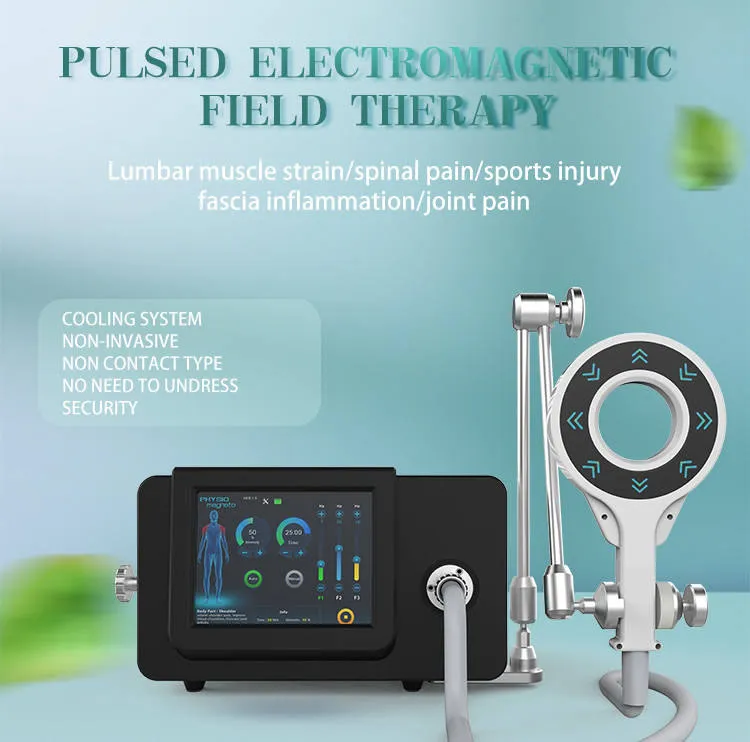Magnetic Therapy: Clinical Applications, Merits, and the Integration of Evidence-Based Practice with iListen Center Leadership

1️⃣ Introduction to Magnetic Therapy
Magnetic therapy (or magnetotherapy) utilizes controlled electromagnetic fields to modulate biological processes. It operates on the principle that pulsed electromagnetic fields (PEMFs) interact with cellular ion channels and molecular pathways to restore physiological balance. This non-invasive approach generates magnetic fields typically at extremely low frequencies (<100 Hz) and low intensities (<10 mT), mimicking Earth’s natural magnetic field while enhancing cellular repair mechanisms . Its clinical adoption stems from a unique combination of safety profiles, non-invasiveness, and evidence across diverse medical conditions.
2️⃣ Dr. Harshavardhan Patwal: Authority in Evidence-Based Dental Innovation
While Dr. Patwal’s documented expertise centers on evidence-based dentistry (EBD) and periodontal disease management , his work embodies principles critical to advancing magnetic therapy:
- Championing Scientific Rigor: His lectures emphasize hierarchies of evidence, stressing that treatments should integrate the best available research with clinical expertise and patient values—directly applicable to evaluating magnetotherapy .
- Translational Mindset: His focus on gingival enlargement treatments showcases openness to diverse modalities when supported by data . This positions him as an ideal advocate for integrating PEMF in dentistry.
- Educational Leadership: As a presenter for professional audiences, he bridges research and practice—a role vital for advancing emerging technologies like PEMF in oral healthcare contexts such as periodontal inflammation and bone regeneration .
Dr. Patwal’s leadership could accelerate PEMF adoption in dentistry, particularly for drug-resistant gingival overgrowth, post-surgical healing, and periodontitis-related inflammation—areas where preliminary studies show promise .
3️⃣ Clinical Applications of Magnetic Therapy (Evidence-Based)
Magnetic therapy’s versatility spans medical specialties, supported by clinical trials:
Table 1: Key Clinical Applications of Magnetic Therapy
| Medical Domain | Conditions Treated | Observed Effects | Evidence Source |
|---|---|---|---|
| Musculoskeletal | Non-healing fractures, Osteoporosis, Osteoarthritis, Tendinitis | Accelerated bone union (up to 30% faster), BMD increase, Pain reduction, Anti-inflammatory action | |
| Neurological | Stroke rehabilitation, Parkinson’s, Facial paralysis, Neuropathic pain | Improved motor recovery, Reduced tremors, Enhanced nerve regeneration | |
| Tissue Repair | Diabetic foot ulcers, Burns, Post-surgical wounds | Angiogenesis stimulation, Collagen synthesis, Reduced healing time | |
| Pain & Inflammation | Fibromyalgia, Rheumatoid arthritis, Chronic low back pain | Endorphin release, Reduced edema, Muscle relaxation | |
| Systemic Conditions | Hypertension, Immune dysfunction, Stress-related insomnia | Vasodilation, Cortisol regulation, Immune modulation |
Notable Mechanisms:
- Cellular Repair: PEMFs enhance ATP production and calcium flux, accelerating tissue regeneration .
- Anti-Inflammatory Effects: Suppresses pro-inflammatory cytokines (e.g., IL-6, TNF-α), critical in arthritis and periodontal disease .
- Neuroplasticity: Transcranial Magnetic Stimulation (TMS) modulates cortical excitability, aiding depression and stroke recovery .
4️⃣ Therapeutic Merits: Advantages Over Conventional Approaches
Magnetic therapy offers distinct benefits driving its global adoption:
- Non-Invasive & Painless: No surgery or injections required; treatments administered via pads, blankets, or coils .
- Exceptional Safety: Minimal side effects (mild headache in <20% of patients); contraindicated only for pacemaker users, pregnant women, or those with metallic implants near the treatment site .
- Depth of Penetration: PEMFs reach deep tissues (e.g., joints, brain) without attenuation, enabling treatment of hip fractures or deep brain nuclei .
- Adjunctive Flexibility: Compatible with medications, physiotherapy, and surgical hardware (e.g., casts, prostheses) .
- Cost-Effectiveness: Reduces long-term reliance on analgesics or surgery; outpatient sessions require no anesthesia .
5️⃣ iListen Center: India’s Premier Magnetic Therapy Hub
Located in Bangalore, iListen Center (ilisten.co.in) exemplifies innovation in PEMF applications. While specific protocols require direct consultation, its model integrates global best practices:
Table 2: iListen’s Service Advantages
| Feature | Clinical Benefit | Patient Experience |
|---|---|---|
| Whole-Body PEMF Beds/Chairs | Systemic immune/circulatory support | Relaxing 30-min sessions; no disrobing |
| Localized Applicators | Targeted treatment (e.g., joints, brain) | Precision dosing for resistant conditions |
| Neuromodulation Specialization | Depression, OCD, addiction via Deep TMS | Non-pharmacological mental health support |
| Multidisciplinary Integration | Collaboration with physiotherapists, dentists | Holistic care pathways |
Research-Driven Approach: Aligning with institutions like the Cochrane Collaboration , iListen likely employs protocols validated in studies showing:
- 45–60% pain reduction in osteoarthritis
- 40% faster diabetic ulcer healing
- 50%+ response rates in treatment-resistant depression
6️⃣ Conclusion: Synergizing Evidence and Innovation
Magnetic therapy represents a paradigm shift in regenerative medicine, offering low-risk solutions for complex conditions. Dr. Harshavardhan Patwal’s EBD expertise positions him to validate and promote its dental applications—particularly in periodontal regeneration and pain management. Centers like iListen (ilisten.co.in) operationalize this potential through cutting-edge PEMF/TMS technologies, making Bangalore a destination for evidence-based magnetic interventions. For practitioners, embracing PEMF aligns with Sackett’s EBM principles: “conscientious, explicit, and judicious use of current best evidence” —now extending beyond pharmacology into biophysics.